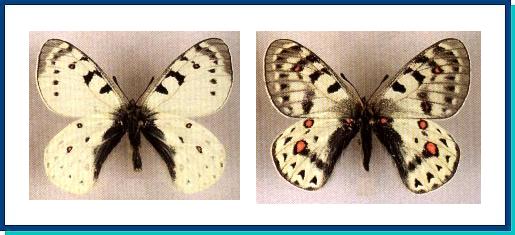LEPIDOPTERA
PAPILIONIDAE Latreille,1802
PARNASSIUS Latreille,1804
Parnassius tenedius Eversmann, 1851
 Parnassius tenedius britae (Bryk, 1932)
Parnassius tenedius britae (Bryk, 1932)
· RANGE. From the Altai across the whole of Siberia and the Far East to the W. Chukot Peninsula, Mongolia and N. China.
· DISTRIBUTION AND VARIATION. Widely but disjunctly distributed from the mountains of S. Siberia to forest-tundras of the Chukot Peninsula. The known subspecies, besides the nominate one, are the relatively similar ssp. vucanus (Bryk et Eisner, 1932) - the Altai Mts.; ssp. scepticus (Bryk et Eisner, 1932) - Transbaikalia; and ssp. britae (Bryk, 1932) - the Far East and the Chukot Peninsula.
· HABITATS AND BIOLOGY . A characteristic Siberian species occurring in habitats with Corudalis sibiricci, C. capnoides, often found along roads, at forest cuttings and clearings. In the south, the species is associated with mountains and alpine meadows at 1,000-2,500 m a.s.l. Dependent on food supply of the larvae, the numbers of this species vary greatly, so that in antropogenic landscapes, even at human settlements, the butterfly is often more abundant, because the host plant flourishes in disturbed grassy habitats. Flight period: May-July depending on climatic conditions. Eggs are laid on the underside of host plant leaves or on the ground. Larvae live cryptically and pupate in a smooth cocoon.
· SIMILAR SPECIES. P. arcica. much smaller, UPS without red spots and almost unmarked.
Photo and text: Guide to the BUTTERFLIES OF RUSSIA and adjacent territories Volume 1. PENSOFT, Sofia - Moscow. 1997